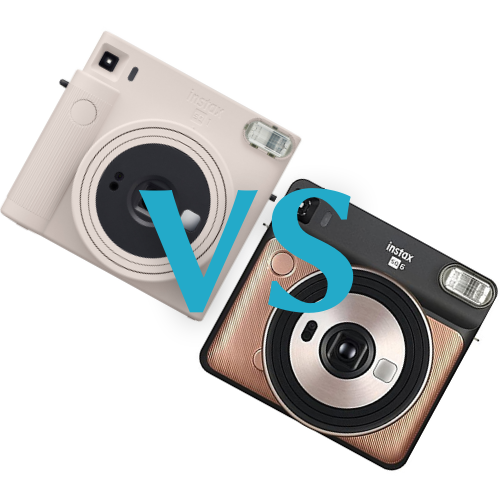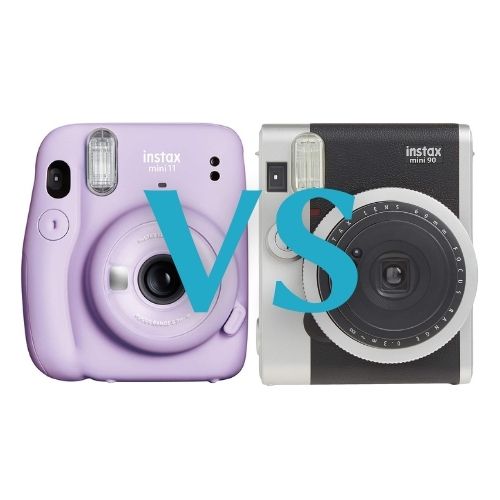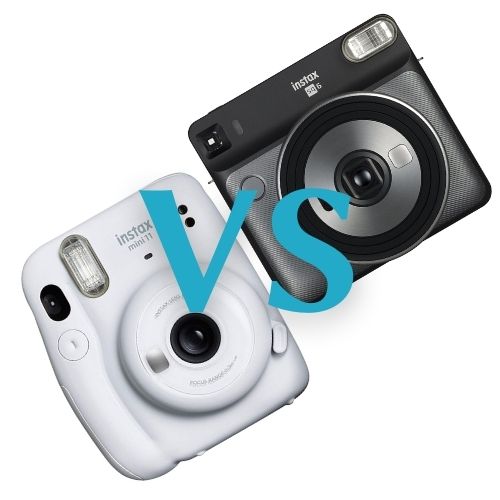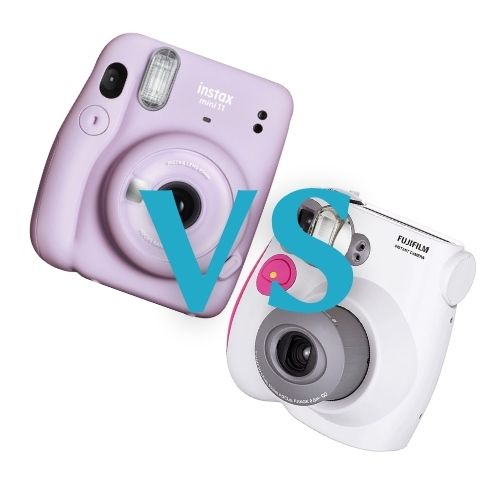
Fujifilm has earned a great reputation for its Instax cameras. Out of the Instax cameras they offer, two of the most talked-about are the Instax SQ1 and Instax SQ6. Let’s learn what makes the two the same and what distinguishes them from each other through this article.
Films and Lenses
Fujifilm’s Instax Square SQ1 is one of the brand’s newest entry-level cameras that fall under the square format category. It followed the SQ6 range and takes pride in its more simplified features and bolder colors.
In terms of the films used, you will notice that both the Instax Square SQ1 and SQ6 are the same. The two use the Instax square film famous to the brand that is capable of producing 62-mm pictures along every edge within just one and a half minute.
The lenses used by these two Fujifilm cameras are also the same. They have similar lens specifications, which means that the prints’ quality is also quite the same. However, the two also differ in that area in the sense that the SQ6 seems to offer more control in terms of creativity, especially on the way the final pictures will appear.
Both the Fujifilm Instax SQ1 and SQ6 can also make up to three hundred shots using CR2 lithium batteries.
Overall Design
Fujifilm SQ1 and SQ6 are inherently square-shaped. The two have almost the same weight and dimensions but you will notice that their resemblance end in those areas. They differ in the overall design in the sense that while the SQ6 holds a dual-color tone as well as black top and edges that border the lenses, the newer version, the SQ1 only has one color for its body.
In terms of appearance, you will notice that both cameras are slightly boxy. This is an advantage, though, as it promotes ease when it comes to gripping and holding them. This design also helps a lot in boosting the portability of the cameras. Moreover, they are designed in a way that you can easily carry them with you using a sling or put them inside your bag.
You can also easily distinguish the SQ6 from SQ1 in the sense that the former has numerous manual controls. It does not only have buttons for the power and flash, but also another one for the modes. You can use this button to set the camera into selfie, macro, landscape, and double exposure. All it takes is pressing the button and you will notice a light turning on beneath the mode you selected.
Color Options
You will also love the fact that both the SQ1 and SQ6 have striking colors. For the SQ1, your choices are bold pastel colors, specifically:
- Chalk white
- Terracotta orange
- Glacier blue
Such colors make this unit distinguishable compared to the ones offered by the SQ6. You can choose from the following colors if you decide to go for Instax SQ6:
- Aqua blue
- Graphite gray
- Ruby red
- Pearl white
- Blush gold
Just like what has been indicated a while ago, the SQ1 only uses a single color for its body. The SQ6, on the other hand, has a primary black color combined with the colored panel you can see in front.
Some say that the SQ1 has a brighter and trendier look, making it fit the younger generations who always want to be on the trend. Meanwhile, the SQ6 brings out a more serious look, allowing it to showcase a design that truly resembles a camera.
Dimensions, Weight, and Size
Fujifilm Instax SQ1 and SQ6 are quite similar in terms of dimensions, weight, and size. SQ10 is still a bit lighter and larger, though such a difference is so trivial that you will not notice it immediately. With only a minor difference in its dimensions, the weight and size of the cameras will not be the sole deciding factor when you are making a choice. But for the sake of comparison, the exact dimensions and weight are:
- Instax SQ1 – 130.7 x 118.6 x 57.5 mm and 390 grams
- Instax SQ6 – 128.1 x 118.7 x 58.1 mm and 393 grams
Flash
The fact that the SQ1 follows the principle of maintaining simplicity is probably one reason why you can’t find a control for the built-in flash. This means that the flash will just turn on the moment you use the camera to take a picture. It automatically adjusts the light output when necessary.
It is not the same for the SQ6, though, since it comes with a control that you can use to turn off the flash completely in case you don’t need it. You will also notice that the flash for the SQ6 is a bit more powerful compared to the SQ1. The flash has a max range of 8.9 feet or 2.7 meters, which is higher compared to the 7.2 feet of the Instax SQ1.
Moreover, Instax SQ6 also features three color filters that you can use to supply a green, purple, or orange shade to the flash. This is good, especially if you want the pictures you produce to have more creative effects.
Built-in Controls
Instax SQ1 is a fully automatic camera, which is the reason why it does not come with manual controls. It works even without the manual controls in SQ6 like the mode switch, flash off, self-timer, and LED status. It also works even if it does not have the power switch integrated into the SQ6.
What it has, instead, is a lens barrel, which you can just twist to activate the camera. Twisting it even further will let you make use of the selfie mode since you will be able to access it with ease. It is not the same with the SQ6 as this specific camera still requires you to press the mode button multiple times just to get to the mode you need to take a selfie.
Another great thing about the SQ1 is that it has a selfie mode, which allows the automatic focusing of the lens closer. With that, it is capable of capturing pictures readily.
The two Instax cameras still have similarities in terms of controls, though, and that is because of the built-in tiny mirror in both that you can see following the lens. You can use this specific mirror in framing your shots.
The SQ1 also seems to do a great job even without the following features that are present in SQ6:
- Advanced modes and settings for shooting
- Self-timer mode
- Manual flash control
- Tripod mount
Conclusion
The Instax SQ1 and Instax SQ6 from Fujifilm have their individual and distinct traits. While they have a couple of similarities, you will also notice several differences when comparing the two. With that in mind, you should research thoroughly to find out which one of the two can give you what you want as far as using an Instax camera is concerned.










